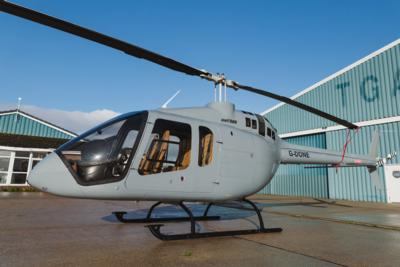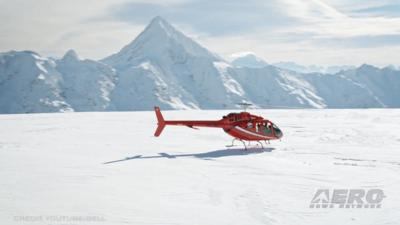First Flight of Single-Engine Helicopter on 100% SAF
Bell Textron Inc.—the Fort Worth-based, rotorcraft manufacturing subsidiary of American industrial conglomerate Textron Inc—announced that a Bell 505 helicopter had completed a test-flight fueled solely by one-hundred-percent Sustainable Aviation Fuel (SAF).

The instance occasions the first-ever flight of a single-engine helicopter powered by one-hundred-percent SAF. For purpose of actualizing the milestone achievement, Bell collaborated with Safran Helicopter Engines; Neste, the world’s largest producer of renewable diesel and jet fuel; GKN Aerospace, the world’s leading multi-technology tier-1 aerospace supplier; and Virent Inc., a Wisconsin-based subsidiary of Marathon Petroleum Corporation and developer of catalytic chemistries that convert plant-based sugars into hydrocarbon fuels.
Bell Commercial Business executive vice-president Michael Thacker stated: “This flight is a monumental achievement for sustainability and decarbonization in the rotorcraft industry. Showcasing a single-engine aircraft’s flight capabilities with one-hundred-percent SAF signals Bell’s commitment to alternative fuel usage and builds on its sustainability practices in its flight operations.”
Safran Helicopter Engines executive vice-president Valentin Safir added: “SAF is one of the key pillars in our strategy to decarbonize the helicopter industry. Our engines are certified to operate on up to fifty-percent SAF and our objective is to certify in the coming years the use of one-hundred-percent SAF, which can potentially result in carbon lifecycle emissions reductions by up to eighty-percent.”
In preparation for the historic flight, Neste and Virent collaborated to blend, test, and deliver the requisite SAF as a one-hundred-percent drop-in fuel. Typically, sustainable aviation fuels made from used cooking oil or other bio-based feedstocks must be blended with petroleum products insomuch as they lack aromatics—cyclic but unsaturated hydrocarbons with alternating double bonds which are required constituents of approved SAFs. Virent manufactures an aromatics component synthesized from renewable plant sugars, which was added to Neste’s neat SAF, thereby eliminating the need for blending the stuff with conventional petroleum jet fuel. Ergo, the SAF supplied by Neste and Virent for the Bell 505 test-flight constituted a one-hundred-percent “drop-in” replacement for petroleum-based aviation fuel, and required no modifications to the test aircraft’s engine.

In addition to its obvious technological and historical significance, the Bell 505 SAF test-flight supported Textron’s Achieve 2025 Sustainable Footprint initiative, which seeks to achieve a twenty-percent reduction in greenhouse gas emissions across the company’s operations.
Since its first delivery in 2017, Bell’s 505 has been among the company’s best-selling, fastest-growing, corporate-and-VIP-market products. As demand for the 505 has increased, Bell has strived to broaden the model’s functionality with augmentations the likes of a fully integrated Garmin G1000H NXi avionics suite, a Safran Arrius 2R engine with a dual-channel FADEC system, and an optional Mecaer Aviation Group interior. The added benefits of a large cabin and panoramic window views make the Bell 505 an ideal conveyance for corporate passengers and discerning private owners.
 ANN's Daily Aero-Term (12.01.25): Convective SIGMET
ANN's Daily Aero-Term (12.01.25): Convective SIGMET ANN's Daily Aero-Linx (12.01.25)
ANN's Daily Aero-Linx (12.01.25) NTSB Final Report: Remos Aircraft GmbH Remos GX
NTSB Final Report: Remos Aircraft GmbH Remos GX Aero-News: Quote of the Day (12.02.25)
Aero-News: Quote of the Day (12.02.25) ANN's Daily Aero-Term (12.02.25): Coupled Approach
ANN's Daily Aero-Term (12.02.25): Coupled Approach




